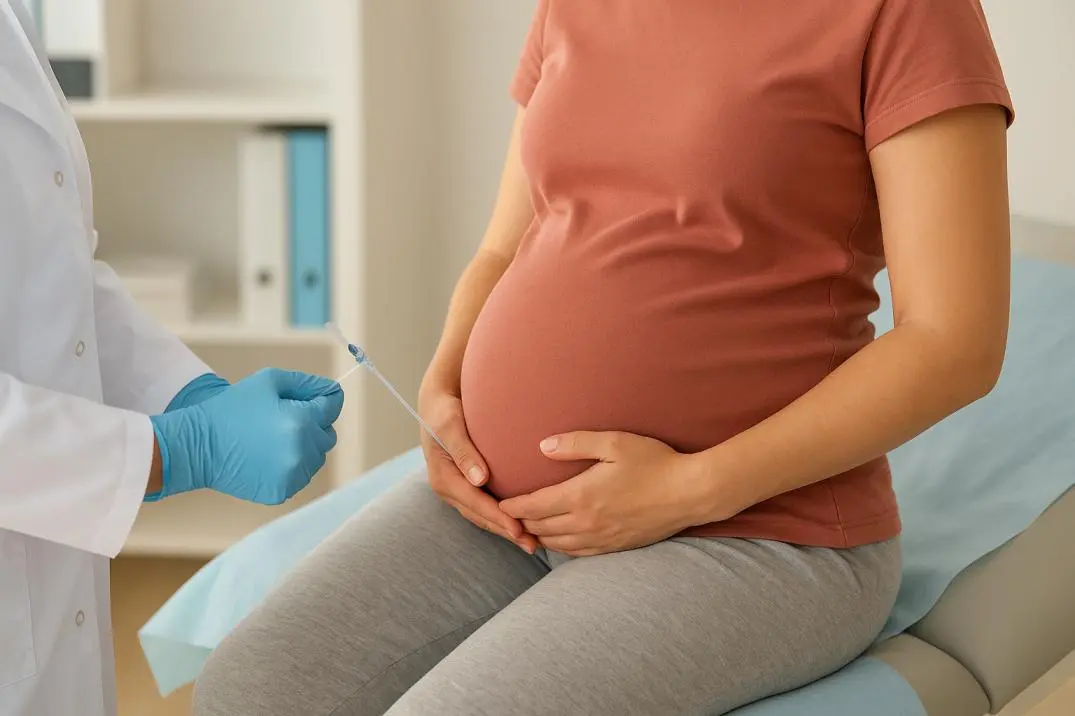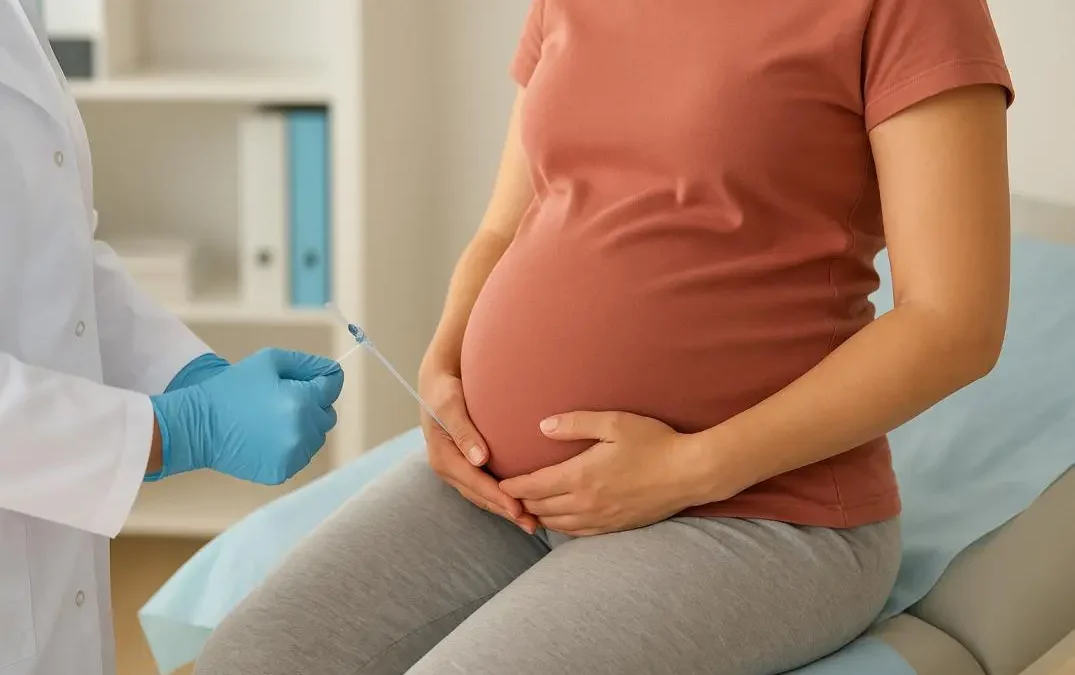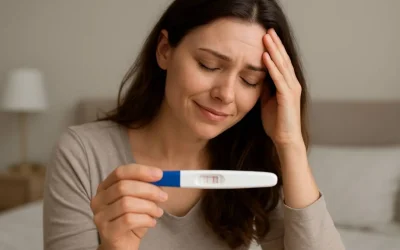How Long Does It Take to Get Pregnant with IUI?

Starting your fertility journey can bring up a mix of emotions, from hope and excitement to uncertainty and a lot of questions.
If you and your doctor are considering intrauterine insemination (IUI), one of the biggest questions on your mind is likely, “How long will this take?” It’s a completely valid question, and having a clear understanding of the timeline can help you feel more prepared and in control.
The desire to build your family is a powerful one, and waiting can be the hardest part. While there’s no single answer that fits everyone, we can break down the IUI process step-by-step.
This helps to demystify the timeline from the initial consultation to the much-anticipated pregnancy test.
In this guide, we’ll walk you through the entire IUI timeline. We’ll explore what happens in a typical cycle, examine success rates per cycle, discuss the factors that can influence how long it takes, and explain what to expect after the procedure.
Our goal is to provide clear, expert information to support you on your path to pregnancy.
What is the Timeline for a Single IUI Cycle?
A single IUI cycle typically spans about two to three weeks, aligning closely with the first half of a natural menstrual cycle.
The process is carefully timed to maximise the chances of fertilisation. It starts with monitoring your cycle and ends shortly after the insemination procedure.
Here’s a breakdown of the key stages within one cycle:
- Cycle Monitoring (Day 1-14): This begins on the first day of your period. Your clinic will monitor you through blood tests and ultrasounds to track the development of your ovarian follicles, which contain the eggs.
- Ovulation Trigger (Around Day 12-14): Once a follicle is mature, you may be given an ovulation-triggering injection (like hCG). This shot ensures ovulation occurs at a predictable time, usually 24 to 36 hours later.
- The IUI Procedure (Around Day 14-15): The insemination is scheduled to coincide perfectly with ovulation.
4.The Two-Week Wait (Approximately 14 days): This is the luteal phase, the period after the IUI procedure. During this time, you wait to see if implantation has occurred. A pregnancy test is typically taken about two weeks after the insemination.
How Soon Can You Get Pregnant with IUI?
You can become pregnant during your very first IUI cycle. If the procedure is successful, conception happens within 24 hours of the insemination, as the sperm meets the egg.
Implantation, where the fertilised egg attaches to the uterine wall, typically occurs 6 to 12 days after fertilisation.
However, it’s important to remember that success isn’t guaranteed in the first attempt. Many individuals and couples require multiple IUI cycles to achieve a successful pregnancy. The waiting period is often the most challenging part of the process.
⇒What are the Success Rates for IUI?
Success rates for IUI can vary widely. On average, the chance of pregnancy per IUI cycle is between 10% and 20%. These rates are cumulative, meaning your overall chance of success increases with each subsequent cycle you undergo.
Most successful IUI pregnancies occur within the first three to four attempts. After this point, if pregnancy has not been achieved, your fertility specialist may recommend re-evaluating the treatment plan and considering other options, such as In Vitro Fertilisation (IVF).
What Factors Influence the IUI Timeline?
Several key factors can influence how many IUI cycles you might need before becoming pregnant. Understanding these can help set realistic expectations for your personal journey.
1.Your Age
Age is one of the most significant factors affecting fertility. Women under 35 generally have higher success rates with IUI because egg quality and quantity are typically better. Success rates tend to decline for women over 35 and drop more significantly after 40.
2.The Cause of Infertility
The reason for needing fertility treatment plays a crucial role. IUI is often most effective for:
- Unexplained Infertility: When no specific cause is found.
- Mild Male Factor Infertility: Issues with sperm count or motility.
- Cervical Mucus Problems: When mucus prevents sperm from travelling effectively.
IUI may be less effective for individuals with blocked fallopian tubes, severe male factor infertility, or diminished ovarian reserve, in which case other treatments might be recommended sooner.
3.Use of Fertility Medications
Whether your IUI cycle is medicated or unmedicated affects the timeline.
- Unmedicated (Natural) Cycle: Relies on your natural ovulation. This may be an option if you ovulate regularly.
- Medicated Cycle: Involves using oral medications (like Clomid or letrozole) or injectable hormones to stimulate the ovaries to produce one or more mature eggs. Medicated cycles often have higher success rates than unmedicated cycles, potentially reducing the number of attempts needed.
4.Sperm Quality
The health of the sperm used is critical. Success depends on having a sufficient number of healthy, motile sperm. Both partner and donor sperm are carefully prepared in the lab to isolate the most active, healthy sperm for insemination.
| Factor | Higher Chance of Success | Lower Chance of Success |
| Age | Under 35 | Over 40 |
| Infertility Cause | Unexplained, Mild Male Factor | Blocked Tubes, Severe Male Factor |
| Ovarian Reserve | Normal | Diminished |
| Sperm Health | High Count & Motility | Low Count & Motility |
What Happens Immediately After the IUI Procedure?
After the insemination, which is a quick and relatively painless procedure, you will rest for about 15-20 minutes. Following this, you can return to your normal daily activities.
Many people wonder if they need to rest or avoid certain activities, but there are generally no major restrictions.
Here are a few common experiences after IUI:
- Mild Cramping: Light cramping, similar to period pains, is normal.
- Light Spotting: A small amount of spotting for a day or two can occur.
- Progesterone Support: Your doctor may prescribe progesterone supplements to help support the uterine lining and a potential pregnancy.
The next step is the “two-week wait.” This is the time between the IUI and when you can take a reliable pregnancy test. Taking a test too early can lead to a false negative (if pregnancy hormones aren’t high enough yet) or a false positive (if you used a trigger shot).
Related :IUI Success Symptoms
When Should I Consider Moving On from IUI?
Deciding when to stop IUI and explore other options is a personal decision made with your fertility specialist. Generally, most experts suggest re-evaluating your treatment plan after three to four unsuccessful IUI cycles.
By this point, the cumulative success rate of IUI begins to plateau. Your doctor will review your journey, consider all influencing factors, and discuss whether continuing with more IUI cycles is advisable or if moving to a more advanced treatment like IVF would offer a higher chance of success.
Frequently Asked Questions (FAQ)
Q: Can you feel implantation after IUI?
A: Some people report feeling mild cramping or experiencing light spotting around the time of implantation (6-12 days after IUI), but many feel nothing at all. The absence of these signs does not mean the cycle was unsuccessful.
Q: How many eggs are ideal for IUI?
A: An ideal IUI cycle aims for one to three mature follicles. While having more than one egg can increase the chance of pregnancy, it also increases the risk of multiple pregnancies (twins, triplets), which comes with higher risks. Your doctor will monitor this closely to balance success with safety.
Q: What is the difference between IUI and IVF?
A: In IUI, fertilisation happens inside the body. Specially prepared sperm is placed directly into the uterus around the time of ovulation. In IVF (In Vitro Fertilisation), eggs are retrieved from the ovaries and fertilised with sperm in a lab. The resulting embryo is then transferred into the uterus.
Q: Can I exercise during the two-week wait after IUI?
A: It is generally safe to continue with light to moderate exercise, such as walking, yoga, or swimming. Most doctors recommend avoiding high-impact, strenuous activities or exercises that significantly raise your core body temperature during this time.
Key Takeaways
- A single IUI cycle takes about 2-3 weeks, from the start of your period to the procedure itself.
- Success is possible on the first try, but many people need multiple cycles. Most IUI pregnancies occur within the first 3-4 attempts.
- The average success rate for IUI is between 10-20% per cycle.
- Key factors influencing how long it takes include your age, the cause of infertility, and whether fertility drugs are used.
- After the IUI procedure, you enter a “two-week wait” before you can take a pregnancy test.
- If 3-4 cycles of IUI are unsuccessful, your doctor may suggest considering other fertility treatments like IVF.

-
About Author
Dr. Supriya Puranik
Gynaecologist & IVF Specialist
MMC -072514 (1993)
Dr. Supriya Puranik, a renowned gynaecologist and infertility expert, leads the IVF & Gynaecology department at Sahyadri Hospitals Momstory in Shivaji Nagar, Pune. She is committed to helping couples overcome infertility challenges.





